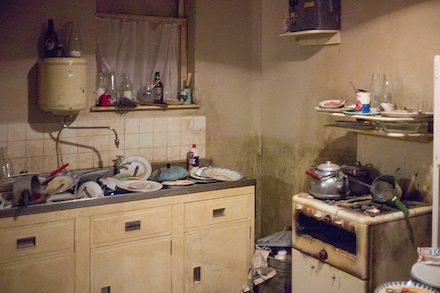Budgeting for a Fixer Upper

New York City’s rising prices over the last several years may have given you pause as you consider grabbing your slice of the American Dream by entering the real estate market for the first time. In the second quarter, the Real Estate Board of New York (REBNY) conducted a study that showed the median sale price rose 8% year-over-year in the second quarter to $633,000. In Manhattan, it was up 5% to $1.16 million, while in Brooklyn, it charged ahead by 17% to $775,000.
If these prices have you concerned that you are priced out of the market, you may consider a fixer-upper. However, this required careful budgeting since costs can quickly spiral out of control.
The Kitchen

Image by Emily May / Flickr
This is one of the most expensive areas to upgrade. The average kitchen remodel is about $22,000, according to HomeAdvisor. You can spend much more, of course. There is a good reason for the high price tag and desire to spruce it up since you spend a lot of time in the kitchen. Not only do you cook there, but it is also the place party guests tend to congregate (it is typically near the food).
You want your kitchen to look appealing while also keeping in mind that it should be functional.
The biggest chunk typically goes toward cabinetry and hardware (29%), according to the National Kitchen & Bath Association (NKBA). Custom cabinets cost a lot of money, so buying off the rack may be an area you can achieve some savings. Installation is another major expense, so you could do the work yourself if you are handy and willing to put in the time. Other major cost areas include appliances/ventilation and countertops.
A smaller remodel in the $10,000 range might including updating your kitchen to be environmentally friendly (which can save you money on your utility bills), such as LED lighting and new windows, along with updating smaller appliances, such as your dishwasher, refrigerator, and oven. Moving up to the $15,000 remodel, typical projects could include updating your replacing your countertops and backsplash (staying away from more expensive materials (such as granite). Instead of replacing your cabinets, you could also reface or refinish them. For the less expensive and more moderate remodels, don’t underestimate how a paint job, which is relatively inexpensive compared to high ticket items, can improve the look of your kitchen.
Moving to the higher end remodels, you can expect to spend upwards of $15,000, and it can easily climb higher. This involves changing your countertops with high-quality materials (e.g. granite), installing custom cabinets, putting in high-end kitchen appliances, and replacing the flooring (hardwood is nice but expensive).
Bathroom

Image by Granit Architects / Flickr
This is an area that can cost very little, or if you are looking to make extensive changes with high-end fixtures, a whole lot. It is not unheard of to spend $50,000 for a complete gut job and high-end remodel. Several years ago, the NKBA, cited the average at about $16,500, with upscale remodels coming in at more than $52,000. Labor tends to eat up a lot of the cost, with materials encompassing the balance. For a fairly small space, there are a lot of choices to make regarding products.
This comes down to plumbing and design. If you are considering moving the bathtub to turn it into a master suite, this will be very expensive. Then, consider the cost of the flooring and shower tile. In terms of budgeting, a rule of thumb is to set the amount at 5% to 10% of your apartment’s value.
Flooring

Image by eugenuity / Flickr
There are many floor choices and a wide range of prices. Quotes for the materials are based on the square footage of the space. Factor in labor, of course. When choosing the type of flooring, consider your lifestyle, and balancing practicality with design.
Hardwood floors are popular and very nice. There are different types of hardwood floors, which vary in quality and price. Oak, maple, and cherry are at the high end. There are also choices regarding solid or engineered flooring. If you are considering hardwood flooring, keep in mind the house rules which may require you to carpet a certain percentage in order to minimize noise.
Other choices, which may be less expensive, include laminate, vinyl sheet, vinyl tile, and luxury vinyl.
There are plenty of places to get quotes from, including Costco, Home Depot, Lowe’s, and specialty flooring places.
Concluding thoughts
When formulating your budget, keep in mind how long you plan to spend living in your new home. If you plan to sell quickly, you will not enjoy the fruits of your labor.
You should also not forget to budget for unexpected problems. Hopefully, nothing major is uncovered, but you need to be prepared. A general rule of thumb is to set aside 5% to 10% of your total budget to cover extra costs that come up. Of course, you could choose to be more conservative by having a larger contingency budget. That way, you do not have to choose between giving up certain things and spending more than you planned.
The post Budgeting for a Fixer Upper appeared first on - Elika Real Estate.



